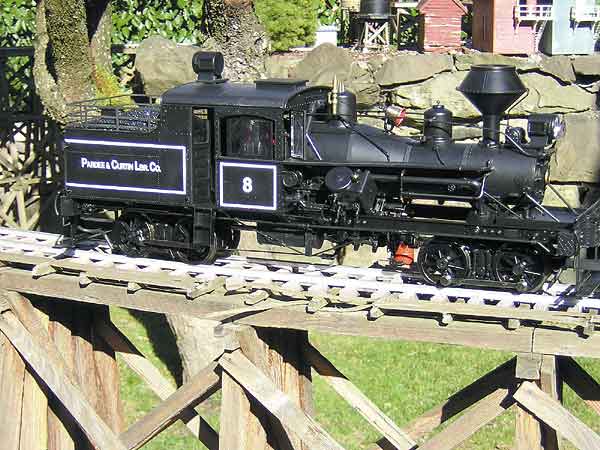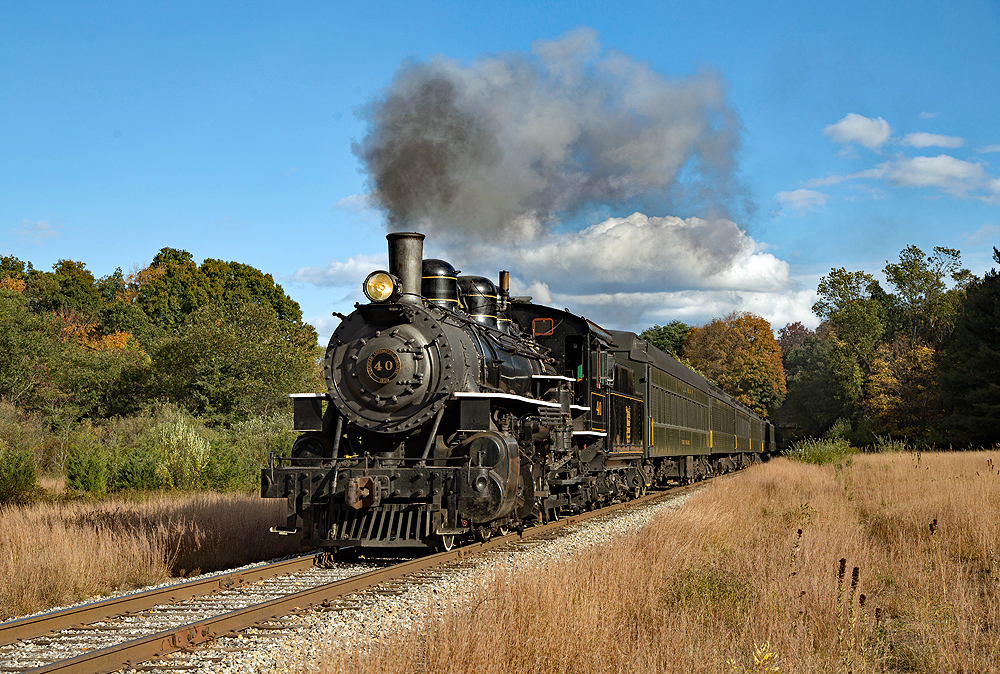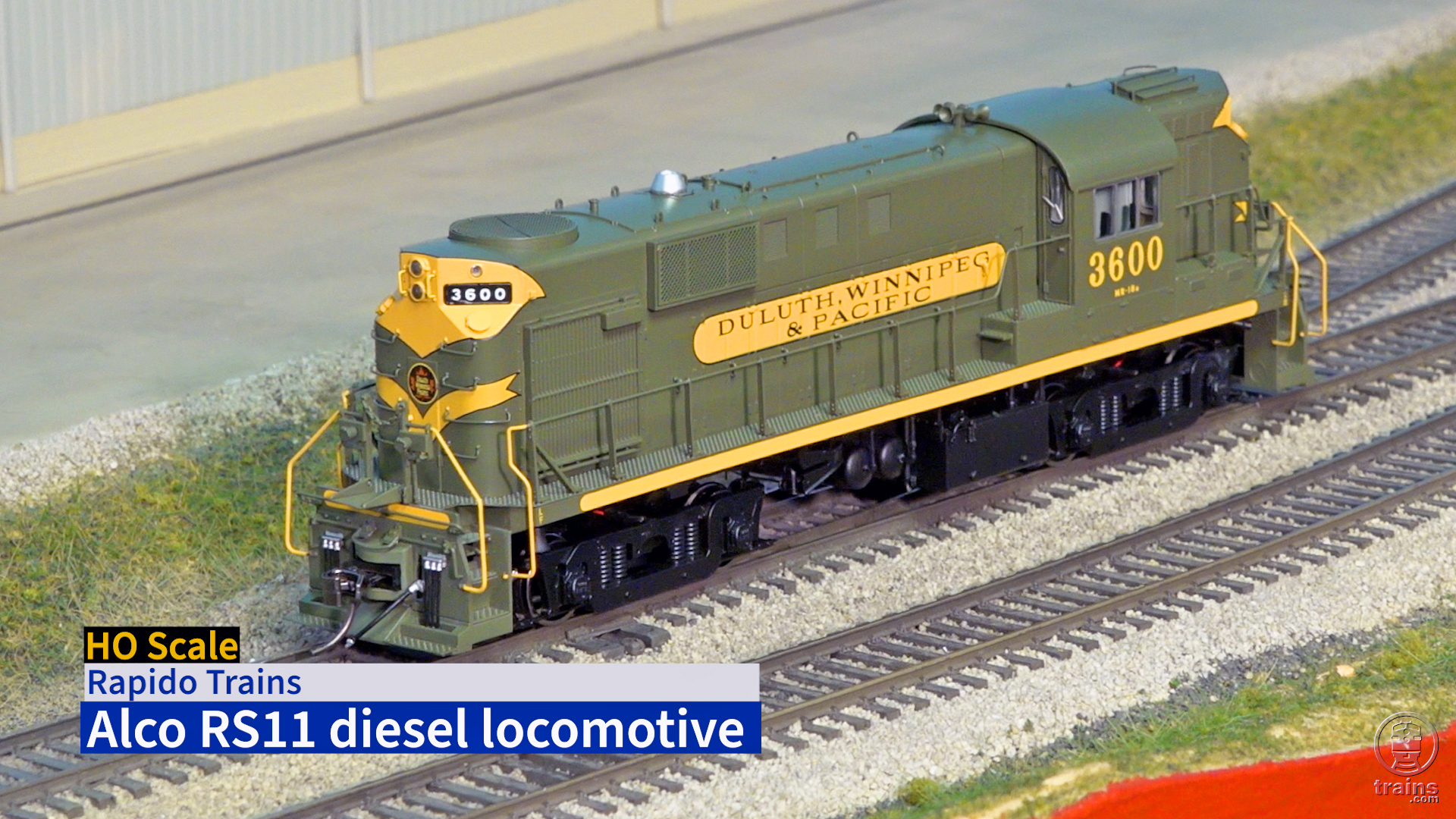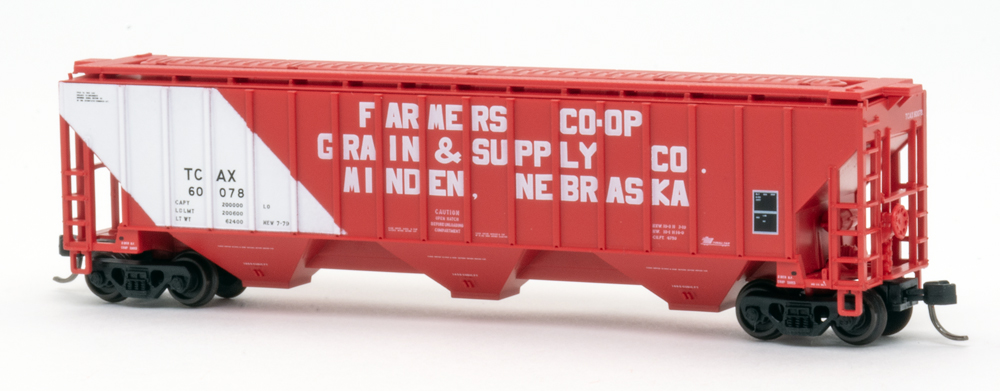Gauge 1, 1:20.3-scale Heisler
Bachmann Industries
1400 E. Erie Avenue
Philadelphia PA 19124
Price: $799
Web site: www.bachmanntrains.com
Plastic-bodied, metal-framed 1:20.3 model (#81796) of a 3′ narrow-gauge Heisler geared logging locomotive; 8-wheel pickup; all-metal drive train and valve gear; detailed cab interior; sound-system ready. Dimensions: length over end beams, 18 1/8″; width at cab, 4 3/4″; height over stack (above railhead) 7 3/16″. In 1:20.3, this works out to 30’9″ x 8′ x 12′, respectively
Pros: Final part of the trilogy that includes the company’s previous Climax and Shay; high fidelity to prototype; clean details; nicely lettered; instruction manual and DVD showing Heisler history and lubricating procedures included
Cons: A little higher noise level out-of-the-box than previous issues, but traceable to all-metal drive and will probably subside when broken in
This engine has all-metal trucks, creating a little higher noise level than the plastic-trucked Climax and Shay. There are metal rollers for wheel pickup, as well as metal U-joints, driveshafts, crank, and rods, with metal bearings inserted into the plastic crankcase. Valve gear is all metal. The crankshaft is split between the rods and the valve gear, allowing independent variations in speed of rear and front trucks without binding the drive train. There is the now-standard Bachmann flicker in the firebox, but none in the ashpan, where sound-system speakers go. A 2″ speaker will fit with no modification. No mounting lugs are provided. Access to the firebox for speaker installation requires removal of the rear truck assembly.
Trucks each have a motor and one worm, driving the outside axle. Siderods transmit power to the inside axle, where a spur-gear train off the axle drives a bevel-gear train to power the dummy driveshaft. The front motor block drives the valve portion of the driveline, while the rear truck powers the cylinder portion. There is about 1/8″ (in some cases a little more) rotational slack in the driveshafts. This can cause a visual pause in the rods and crank counterweights. The slack is in the spur-to-bevel gear attaching the shaft and the U-joint pins to stub shaft. This can be minimized by bending the sound contacts up out of the way by removing cylinder covers. The crankshaft is a 90 degree shaft, so the contacts, if used for sound, go “”chuff-chuff-blank-blank-chuff-chuff.” In most installations, I have been using auto-chuff. Chuff averaging circuits might smooth this out.
In my experience, the undecorated units come with two stacks-an “onion” stack and a straight stack. The Pardee-Curtin unit has a diamond-shaped stack, similar to that found on the Ely-Thomas Shay. The undecorated units I have seen also have air pumps and air tanks, which certainly fill out the front end of the locomotive. The Pardee-Curtin and Oregon Lumber have neither air pumps nor tanks.
The cylinder cocks, at least the upper ones, are fragile. They stick out just far enough to hit if you lay the engine over on a flat table. If yours breaks, drill out the remains in the side of the cylinder and glue the stub back into the cylinder. This pulls the cock in just far enough to clear.
The rear sand-box on the back of the tender shell is in a position to prevent raising the coupler lift bar or removing the pin from the link pocket. Prototype information indicates Heisler sometimes added a large spacer block between the link box and the end beam to allow removal of the pin. If you want your lift bar to work, however, you will have to raise the sandbox 3/16″-1/4″.
The cab-roof vent is equipped with a new sawtooth-shaped bar to hold it open. Cab interior detail is very good. Side doors and front doors open and side windows slide. The reverse bar in the cab moves the valve gear, but it’s a tight fit. Metal end steps are a nice feature and do not seem as prone to breakage as previous steps.
The locomotive started at 1.0V, .6A, and maintained running speed at 1.5V, .5A. Full slip at 13v was 1.5A. The locomotive is DCC ready, with four leads to each truck–two for pickup, two for motor–with a screw-terminal junction board in the tender under the fuel load.
One puzzlement was how to lubricate the motor shaft at the brush end. This requires removing the trucks, removing the axles, splitting the case, removing the motor, and removing the spur/bevel gearbox on the brush end of the motor, then re-assembling the unit after lubrication. The instruction manual and DVD show an oil hole in the plate at the brush end, but no hole exists on any of the locomotives I have had apart. The DVD tells you to lube on the side of the plate away from the motor. Having had seven units apart, I have found no hole to allow oil to reach that bushing.
A now-standard-for-Bachmann large-scale/NMRA polarity switch is located inside the smokebox door, along with the smoke-unit switch. All seven units I have seen have this switch in center “off” position when shipped. If your locomotive does not run, but the lights come on, check the switch.














